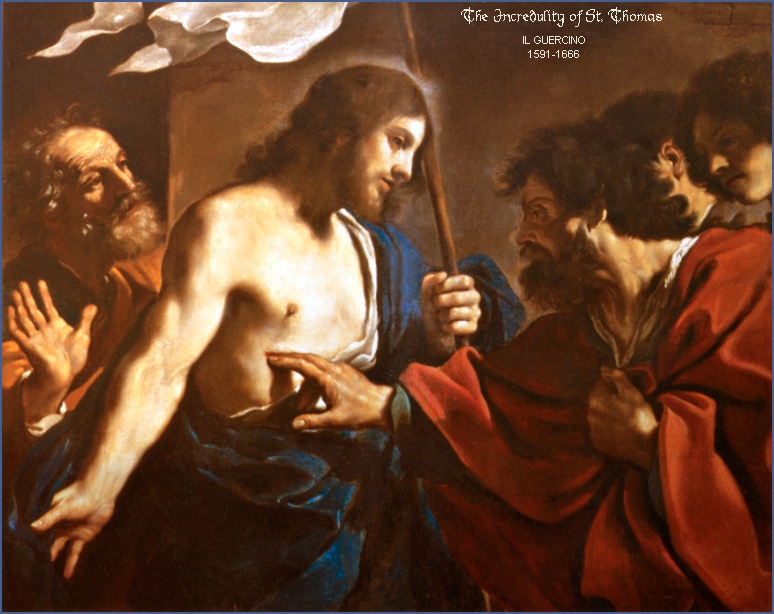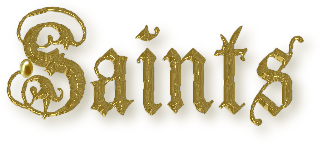   St. Thomas the Apostle July 3 First Century Little is recorded of St. Thomas the Apostle, nevertheless thanks to the fourth Gospel his personality is clearer to us than that of some others of the Twelve. His name occurs in all the lists of the Synoptists (Matthew 10:3; Mark 3:18; Luke 6) and in Acts 1:13, but in St. John he plays a more prominent part. First, when Jesus announced His intention of returning to Judea to visit Lazarus, "Thomas" who is called Didymus [the twin], said to his fellow disciples: "Let us also go, that we may die with Him" (John 11:16). Again it was St. Thomas who during the discourse before the Last Supper raised an objection: "Thomas saith to Him: Lord, we know not whither Thou goest; and how can we know the way?" (John 14:5). But more especially St. Thomas is remembered for his incredulity when the other Apostles announced Christ's Resurrection to him: "Except I shall see in His hands the print of the nails, and put my finger into the place of the nails, and put my hand into His side, I will not believe" (John 20:25); but eight days later he made his act of faith, drawing down the rebuke of Jesus: "Because thou hast seen Me, Thomas, thou hast believed; blessed are they that have not seen, and have believed" (John 20:29). Apart from these few Scripture passages we know but a little from Tradition: that he evangelized India; Thomas undertook to build a palace for Gundafor, but spend the money entrusted to him on the poor. Gundafor imprisoned him; but the Apostle escaped miraculously and Gundafor was converted. Going about the country to preach, Thomas met with strange adventures, then went to the city of King Misdai (Syriac Mazdai), where he converted Tertia the wife of Misdai and Vazan his son. After this he was condemed to death, led out of city to a hill, and pierced through with spears by four soldiers. He was buried in the tomb of the ancient kings but his remains were afterwards removed to the West. In that region is still to be found a granite bas-relief
cross with a Pahlavi (ancient Persian) inscription dating from the
seventh century, and the tradition that it was here that St. Thomas
laid down his life is locally very strong. Certain it is also that on
the Malabar or west coast of southern India a body of Christians still
exists using a form of Syriac for its liturgical language. Whether this
Church dates from the time of St. Thomas the Apostle (there was a
Syro-Chaldean bishop John "from India and Persia" who assisted at the
Council of Nicea in 325) or whether the Gospel was first preached there
in 345 owing to the Persian persecution under Shapur (or Sapor), or
whether the Syrian missionaries who accompanied a certain Thomas Cana
penetrated to the Malabar coast about the year 745 seems difficult to
determine. We know only that in the sixth century Cosmas Indicopleustes
speaks of the existence of Christians at Male (?Malabar) under a bishop
who had been consecrated in Persia and that the reputed relics of St.
Thomas were certainly at Edessa in the fourth century, and there they
remained until they were translated to Chios in 1258 and towards to
Ortona.    HOME---------------PRAYERS AND DEVOTIONS-----------------LITANIES www.catholictradition.org/Saints/saints7-2.htm |